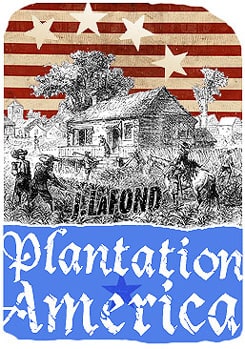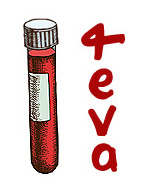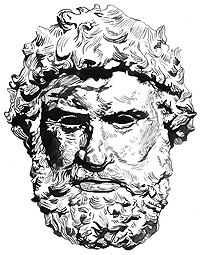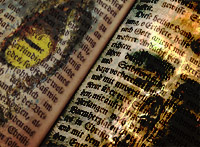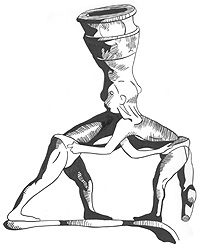Academic historians use slave never servant as an exclusive description of an African American person held in bondage.
Academic historians, as per the precepts of his foundational faith in The Lie, use servant, never slave to describe a European American held in bondage.
The fact is well known amongst the historically literate—including establishment historians charged with lying and obfuscating the truth for the general public—that as of the printing of the King James Bible in 1611 servant was the established term for slaves of all types.
It is a fact that blacks were rarely called slaves but simply Negroes and that whites were just as likely to be referred to as slaves for the first 200 years of Plantation America’s dubious history.
But are they really lying?
Are the facts that clear?
Let’s examine some historic quotes from primary sources cites by Herbert Aptheker in 1943 in his seminal work American Negro Slave Revolts.
“The Phase of it [American Plantation Slavery] which involves the whites alone is beyond the scope of this study.”
In this passage, Aptheker implicitly states that there was a period in English America when only whites were held in bondage and dismisses it as unworthy of study, marking his work as activism. For instance, my uneducated ass, once deciding to research Caucasian Servitude in America, have made it my business to shed equal light on the African American condition, if for no other reason to place my primary subject into context. However, academic works are inherently activist and political, not academic, making the very profession a lie unto itself.
Aptheker examines the letter of one Slave Mistress:
Mrs. Martha L. Nelson, Boydton, Mecklenburg County, Virginia
“…[Coleman, her $900 dollar bondsman] would inform on the negroes, as soon as any white person would… I am almost a maniac from the loss of sleep, now in the dept of night I write, beseeching you to pardon my servant [who was under sentence of deportation due to some suspicion] Such a servant ought not be sent away particularly in these perilous times of insurrection.”
Letter to Governor Wise, 2 December 1856
Mrs. Martha, refers to Coleman as a servant only, not a slave, yet the historian, Aptheker refers to him in the bracketing text only as a slave.
I am of the impression, after reading thousands of records, memoirs, letters and advertisements, that servant was used as a positive term for owned persons and slave as a negative term by owners and owned alike. For the term slave was gotten from the Islamic trade in abducted Englishmen who lived in abject misery of the worst kind and servant was used as a term for biblical slavery which was seen as more humane. That fact is, that slave and servant were not legal terms, but that bondsman and bondswomen were the legal terms and this legal definition encompassed everything from apprentices to POWs sentence to death by hard labor. So, even in the time of bondage, semantics were being played by all involved.
But is there a reference specifically to white slaves?
Virginia is the prime case study. So let us dig into Mister Aptheker’s ill-considered footnotes for a look at that vast stretch of time, from 1620 through 1835, when it was commonplace for European Americans and African Americans to be enslaved side by side under English and then American sanction. Two examples, cited by Aptheker but not incorporated into his thesis, but rather let languish in the footnotes, will suffice:
1694, Virginia, Governor Andros issues a Proclamation
“…diverse Negroes & slaves in sundry parts & countyes in this colony have mett congregated & got together, which meeting & gatherings together of such Negroes or slaves as aforesaid being of dangerous consequences…”
“Negroes & slaves?”
“Negroes or slaves?”
Who are these slaves that are not Negroes?
Let us look for a clue in 1727, the same year it was determined that a baby born out of wedlock to a white woman in Virginia would be sold for a term of 31 years by the Church Warden:
1727, Virginia Statutes at Large, IV, pp 197-204
As part of a militia act aimed at raising troops to fight off invading European forces or Indian raiders it was also noted that:
“…great danger may likewise happen by the insurrection of Negroes and others.”
Who were these “others?”
They were not European colonial rivals nor Indian tribesmen.
Might they have been invaders from Mars?
Perhaps there were fears that the Chinese Star fleets of the 1420s had entered a dimension door in the Bermuda Triangle and would burst forth on the Outer Banks with some late summer storm?
As absurd as these ruminations are, are they any less ridiculous than supposing over and over again, as professional historians always seem to do, that European Americans were not held in the same state of bondage as were Native Americans and African Americans despite the clear record of their servitude which is dismissed out of hand or reasoned away whenever it intrudes.
To prove this we might want to look for evidence that Africans and Natives were sometimes treated as free folk. It is obvious, that since most native tribes were allies in wartime with the English and American governments and that Indians enjoyed special status under the U.S. Constitution that it was normal for Indians to be free. So, what about African Americans, were they permitted to live free while “others” were held in bondage?
That will be the subject of Part 2.
Support Plantation America Research
To support this project and view some graphics go to:
link › patreon.com/jameslafond


